Don't worry 'bout the mule goin' blind 🇧🇴
I’ve nearly reached the end of Bolivia and have ridden my first kilometers in Peru. I’m currently in Copacabana, Bolivia and plan to ride along the northern shore of Lake Titicaca before leaving Bolivia for good. The cycling in Bolivia has been some of the most challenging so far on account of the insanely steep road grades and high altitude; rarely did I descend below 3,000 meters in the past six or seven weeks. Cycling up hills has me going near walking speed and and on the way down I regularly pass trucks. As fun as the downhills are, the uphills are hard work and for this reason I elected to take my second long bus ride of the trip between Sucre and La Paz. I spent a lot of time in Bolivia not cycling and either resting or taking “side-trips.” Bolivia has been one of my favorite countries so far on account of the friendly people, the good food, and the amazing landscapes.

Five seconds before the dog went loco

Panorama of Potosí
After four days at the Casa de Ciclistas in Uyuni I hit the road solo headed for Potosí. I was keen to get to lower elevations because I continue to find the altitude a difficult variable in nearly every respect. It’s dry, it’s cold, and it’s exhausting. Before I’d reach the relatively lower climes of Sucre I had to travel via Potosí a city known for it’s once productive silver mines. I reached Potosí in about three days of thrillingly fast cycling. What I’d discover on this section applied to most of my time cycling in the western ends of Bolivia: it’s steep. This makes for painfully slow, never ending uphills followed by screamingly fast downhills. Eventually I made it to Potosí and once within city limits had to push my bike up the hills toward the center. There was no point in trying to cycle the steep city streets.

The Cerro Rico in the heart of Potosí
The city of Potosí and particularly its Cerro Rico silver mine have a tragic history of profiteering by European colonists. At one point it was the most productive silver mine in the world but practically all of its bounty was shipped to Europe and helped to finance the industrial revolution. Coincidentally, I was reading Open Veins of Latin America by Eduardo Galeano and though the book has its own left-of-center biases, it paints a damning picture of exploitation. People continue to mine in this area for tailings of silver, zinc, and lead. Before arriving in town I had heard that it was possible to take a tour through the mines but was unsure if this form of tourism was ethical or not. After a bit of reading and some discussions I took a tour through the silver mine. It’s cramped, it’s hot, it’s loud, you have to crawl around, move out of the way of carts loaded with ore, all the while trying to breathe through a handkerchief at 4,000 meters altitude. It was a sobering glimpse of working conditions elsewhere in the world. Whatever they earn down there, it’s not enough. Count your blessings.

Schoolyard campsite
After three or four days in Potosí I hit the road again headed for Sucre, excited this time to be descending somewhat and getting into some warmer, thicker air. The ride to Sucre took about two full days of cycling. One night I reached the town of Sijllani toward the end of the day and asked around for a place to camp. The school groundskeeper Alberto said it was no problem for me to sleep near the basketball courts, there was a light and a small tap. I could stay as long as I wanted the following morning because school was out of session.

Ready for the downhill

Varying landscapes between Potosí and Sucre
There would be one more big downhill and then a big uphill before reaching Sucre the following day. Shortly before commencing the downhill I noticed a chip in my rear brake pad and did a little roadside swap. I like the little bits of roadside maintenance. After a tears-in-your-eyes fast downhill I reached the river and the bottom of the valley. Time for the uphill. A few hundred meters into the climb a truck hauling sand from the riverbed stopped and asked if I wanted a ride. Not gonna say no to that! We tossed my bike into the sand cautious to at least keep the drivetrain free of sand and off we went. The driver Matias gets a kick out helping cyclists up the hill. He drives this section three or four times a day hauling sand for residential construction. We came upon some of his colleagues swapping a tire on another truck and we helped them get back on the road. It was interesting chatting with Matias and seeing the trip from a different perspective. Just say yes.
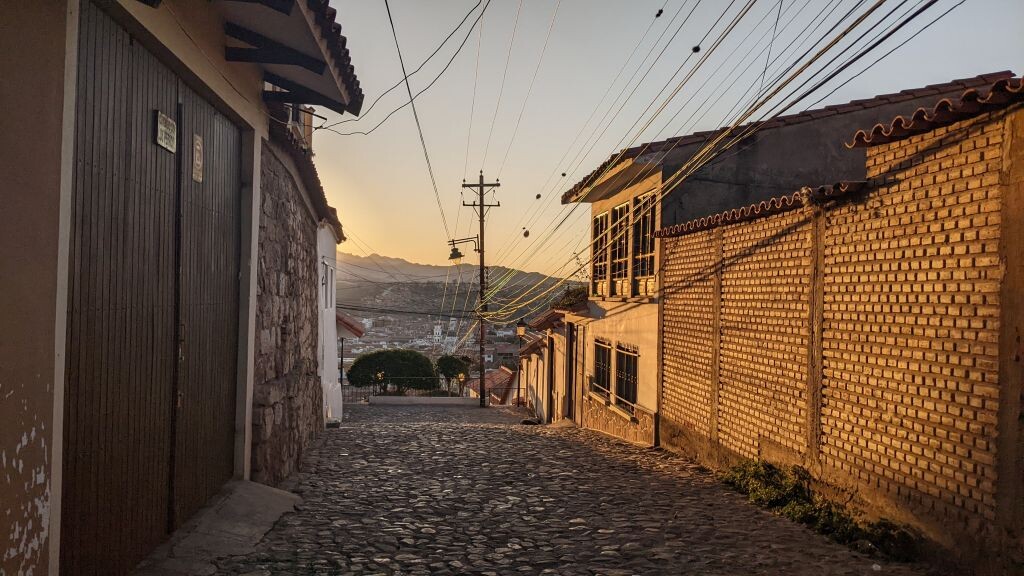
Sucre around sunset
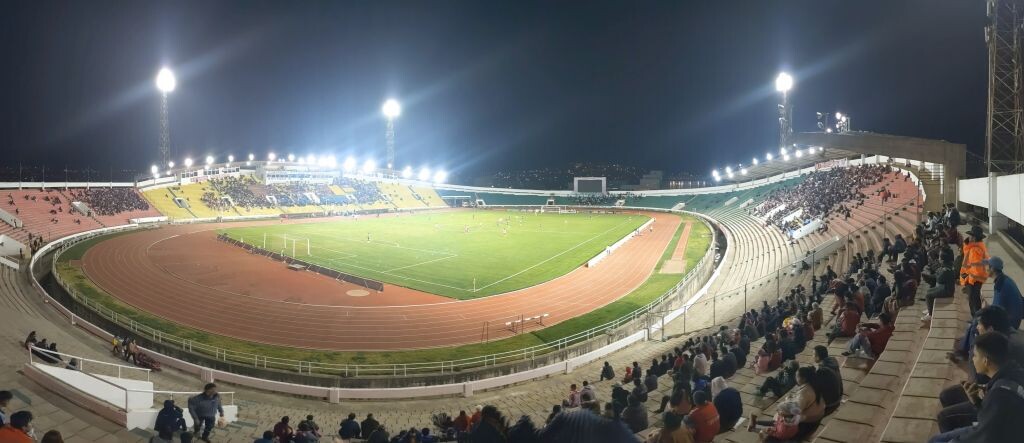
A Bolivian football match
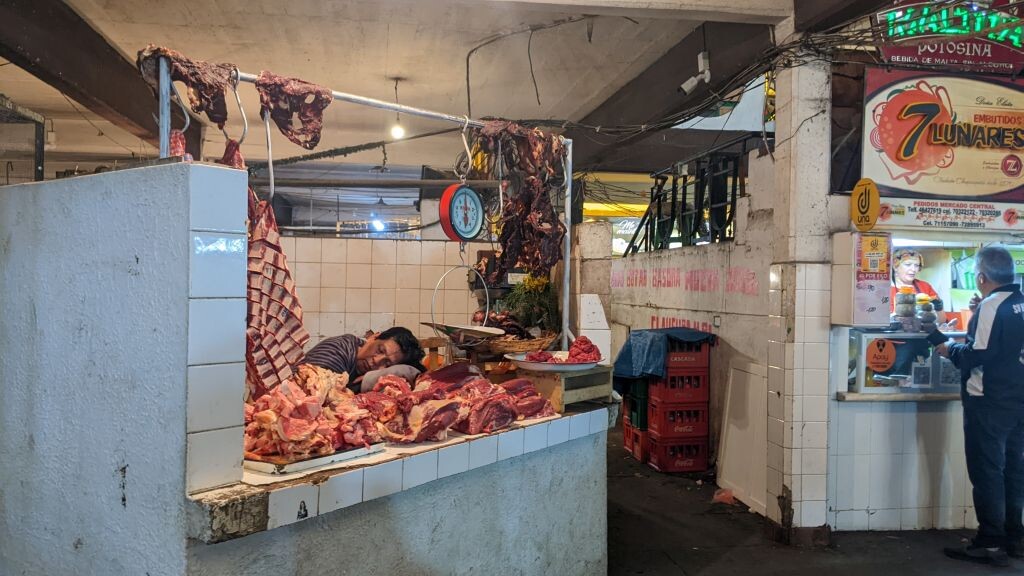
Wake him up if you need anything

Birthday BBQ with new friends
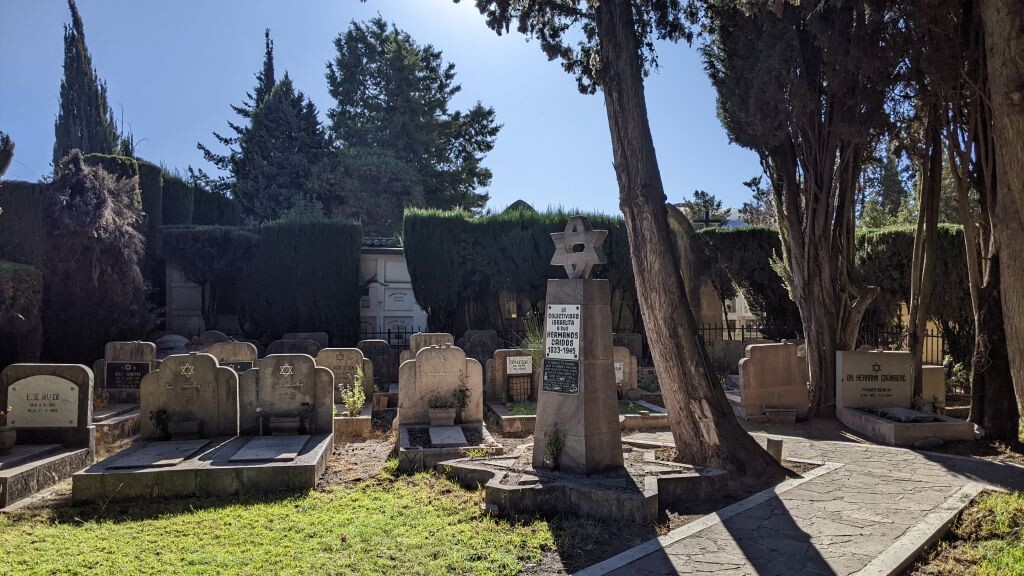
An interesting, small Jewish section at the Cemetery in Sucre
Up to this point Sucre has been my favorite little city of the entire trip. What a place! It’s warm and it’s got good food and friendly people. I knew I’d spend at least a week there because I wanted to take some Spanish lessons with a tutor. For that it was a productive week, though she didn’t speak much English and I just couldn’t wrap my head around reflexive verbs. It got a bit frustrating. I developed a nice little routine with lessons in the morning, then to the mercado central for lunch, which was usually a few salteñas (a type of empanada but with a more liquidy inside and a semi-sweet dough), then a serving of mondongo (slow cooked meat stew with rice and potatoes), and finally a fruit smoothie. I got pretty used to the good food, especially the quality and quantity of fruit. I ate my fair share. I also celebrated my birthday in Sucre together with some new friends.
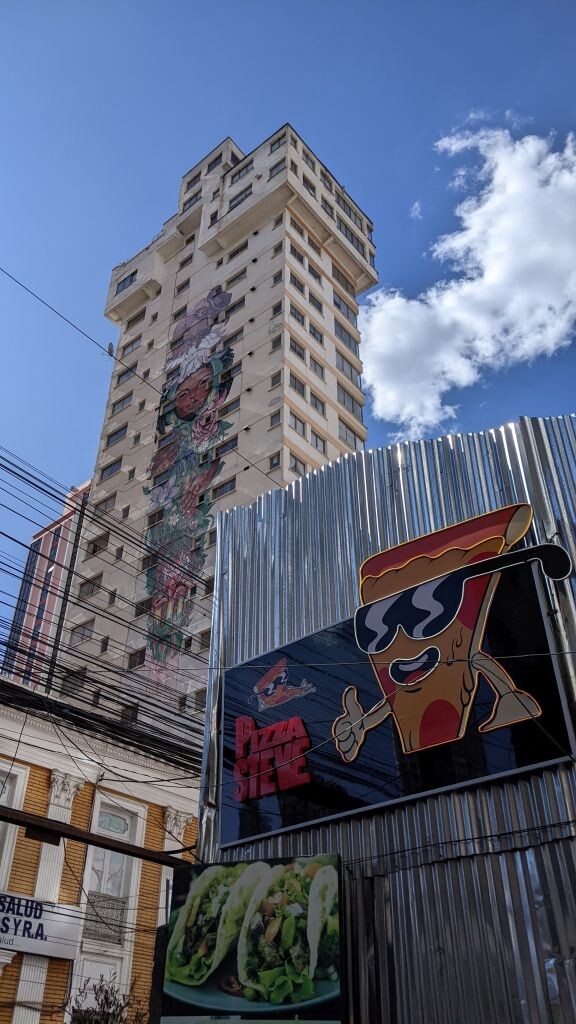
Pizza Steve, naturally, my first real food after being sick
The novelty of the fast downhills began to wear off a bit around Sucre while the thought of more excruciating uphills began to weigh me down. I decided to take the overnight bus from Sucre to La Paz. Hearing and feeling the bus struggle uphill on our way out of town confirmed my decision, though through the darkness I couldn’t catch a glimpse of the landscapes I was missing. I arrived in La Paz early the next morning and proceeded to find a bed at a local hostel. I spent three nights there before catching word of another Casa de Ciclistas in the city so I went there instead. My love for the fruit smoothies and market food got the better of me in La Paz and I caught a pretty good case of food poisoning. Before my arrival in the city I had heard from others that every traveler gets sick there and I was no different. I found it tough to recover from the sickness, maybe it was the altitude, maybe it was the fact that I was hardly eating, but whatever it was I was ready to leave La Paz. Though it’s a nice city as far as cities go, it’s congested and polluted and it didn’t much help my mood to feel stuck there. Then a few other cyclists that I had ridden with months earlier also showed up at the cyclist’s hovel and we conjured up a plan to climb the nearby Huayna Potosí, a mountain that towers above the city and whose summit stands at 6,088 meters.

The gang on the way up to Huayna Potosí
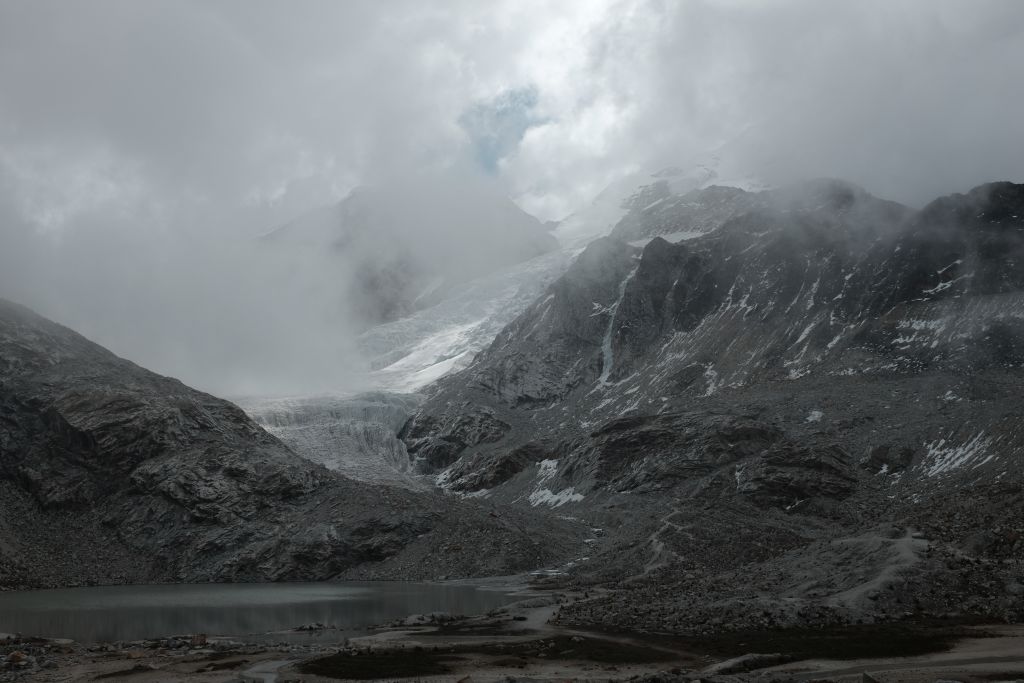
Not looking very inviting
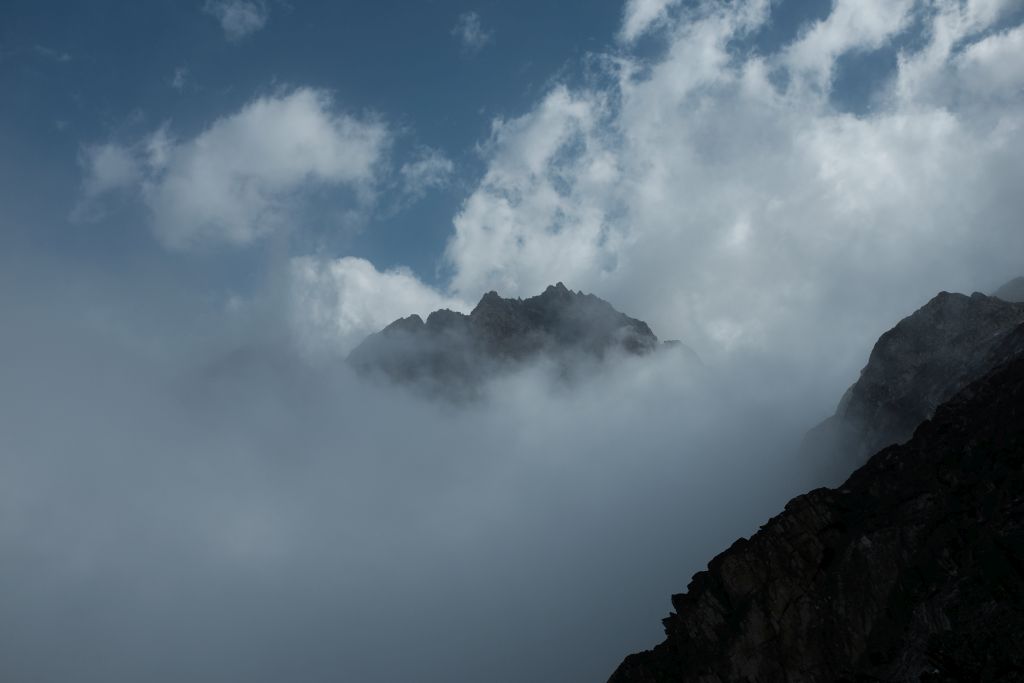
Eventually things would clear up
We left a few days later and planned to climb the mountain in two days by taking a van to the end of the road and then hiking from there to a small refugio. I struggled on the first day lagging a bit behind the group but eventually we all made it to the refugio somewhere above 5,000 meters. Dinner was a simple plate of unseasoned chicken and some pasta, no sauce. We’d planned to try and get some sleep after dinner around 19:00 and then waking up at midnight in order to start hiking at 01:00. I was still recovering from my bout with the food poisoning so drank some electrolyte mix in the evening. Nick, another cyclist was also not feeling his best so we split the electrolyte drink. I woke up sometime in the night feeling terribly nauseous with a pounding headache and ready to throw up. After trying and failing to go back to sleep, plastic bag at the ready, up came my dinner! I hustled outside to finish throwing up, looked up at an amazingly clear and beautiful night sky and laughed at myself and the contrast in my current situation. It sure is pretty!

The summit ridge shortly before dawn
In the morning, I checked to see if Nick was awake and sincerely hoped that he’d decided to bail on the summit attempt and head back down because that’s all I really wanted to do. Forget my dreams of being some kind of hardcore alpinist hero, forget altitude, take me to the beach! Nick was gonna give it a shot, though. Damn! I tried to sleep in as much as I could, had an ibuprofen and one cracker for breakfast, and around 01:30 off we went. Surprisingly, once we got going (or once the ibuprofen kicked in) I felt great! We spent about five hours making our way to the summit just in time for sunrise. It was a neat experience but not one I’m keen to repeat anytime soon. It’s made me even more excited to get out of the high Andes to lower altitude. The descent from the summit back to the refugio only took about two hours, we had a quick and simple lunch there, and then spent the rest of the morning making our way back to La Paz. Having accomplished quite a bit before dawn time was skewed for the rest of the day. Back at the refugio around 09:00 in the morning it felt like 16:00 in the afternoon.

Morning has Broken by Cat Stevens
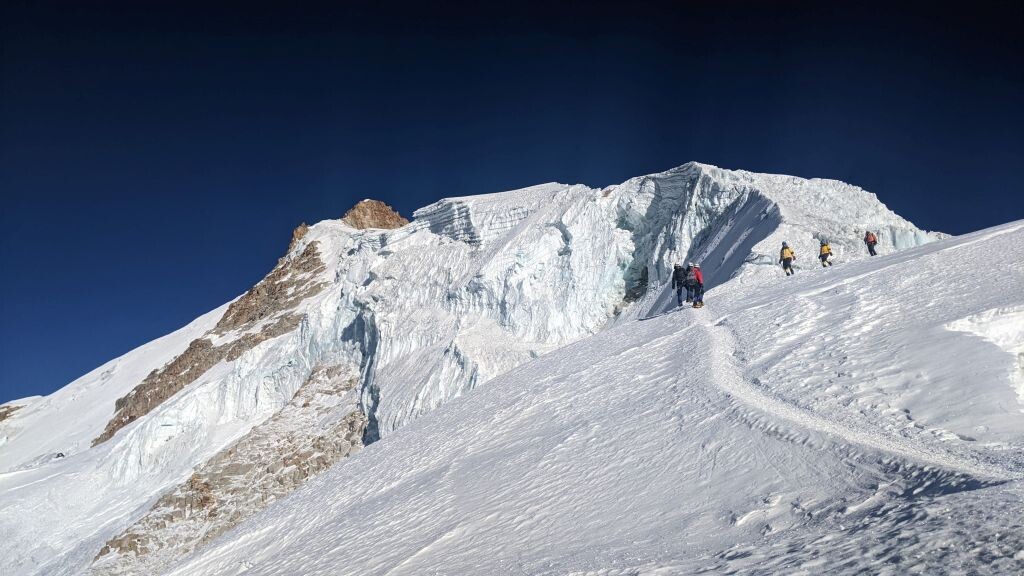
On the way down!

Air getting thicker
We made it back to La Paz and now I was really ready to leave and continue cycling toward Peru. I caught up with the Austrian cyclists at their hostel and saw a video of “the Death Road” (stupid name, I know). The touristy nature of the road had dissuaded me from cycling it but the footage in the video looked pretty amazing. Together with a few other cyclists we made a plan to ride it down into Los Yungas and then to take a bus back up to La Paz. Unfortunately, we had to wait a few days for better weather which meant even more time spent in La Paz. A steep mountain ridge separates La Paz from the beginning of the descent so the weather stays cold and dry in the city but just on the other side of the ridge it’s cloudly, humid, and warm. Eventually, the forecast improved and we left La Paz on a mission to cycle up to La Cumbre around 4,400 meters after which it would be nothing but downhill for a day and half. The toughest part about climbing out of La Paz is the altitude combined with the pollution. As your climbing and breathing heavily a diesel truck will go by and emit a cloud of black smoke. Lovely.
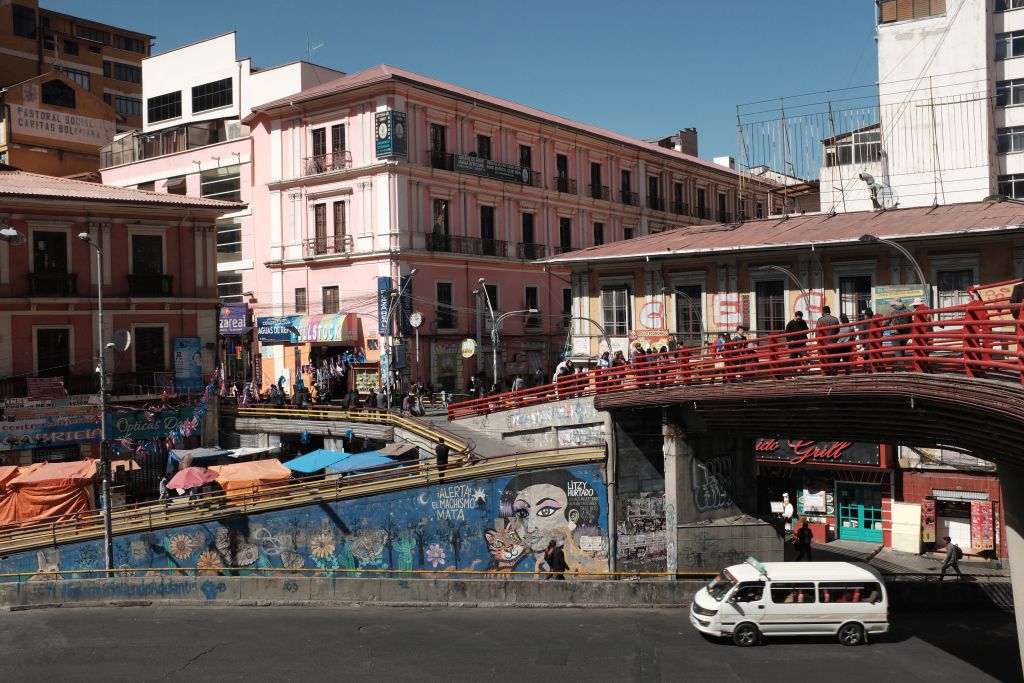
The main drag in La Paz
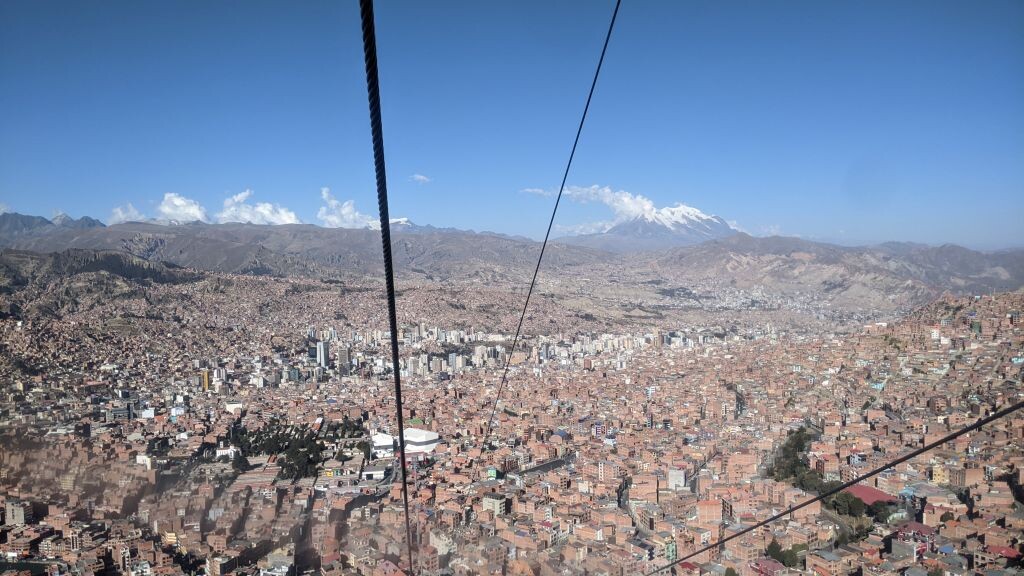
Spent the day riding the teleferico
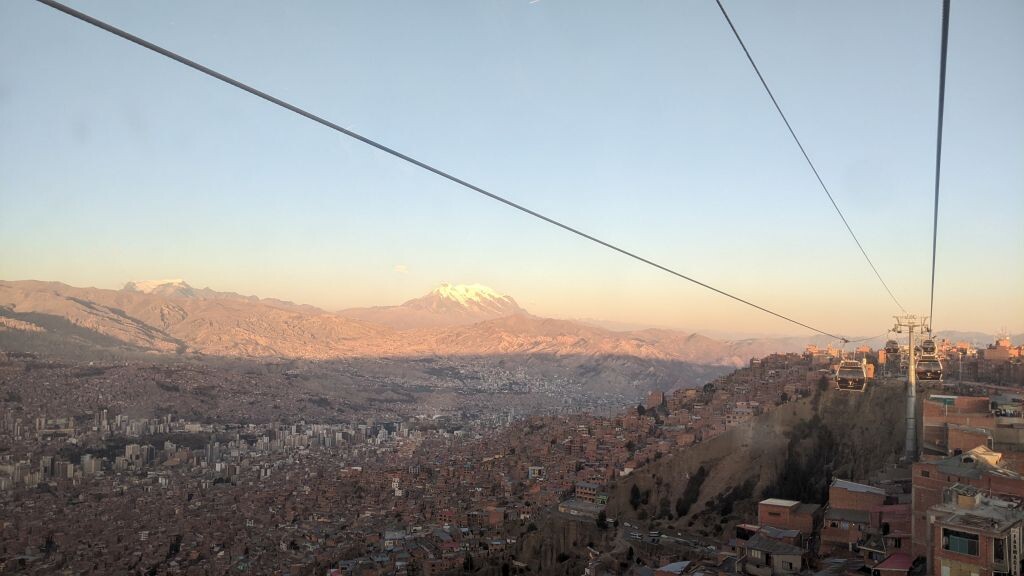
Crossing El Alto
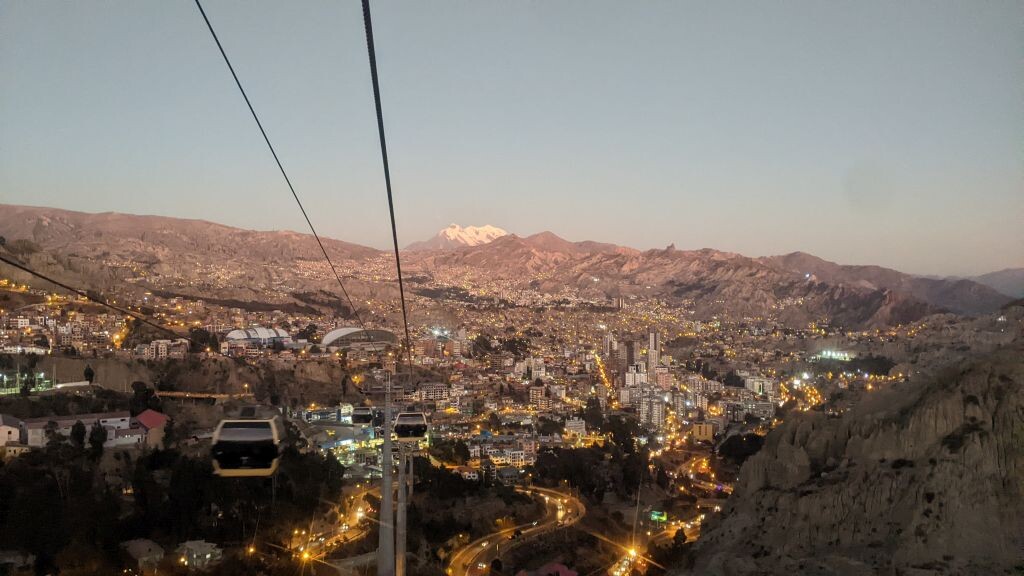
On the way back down
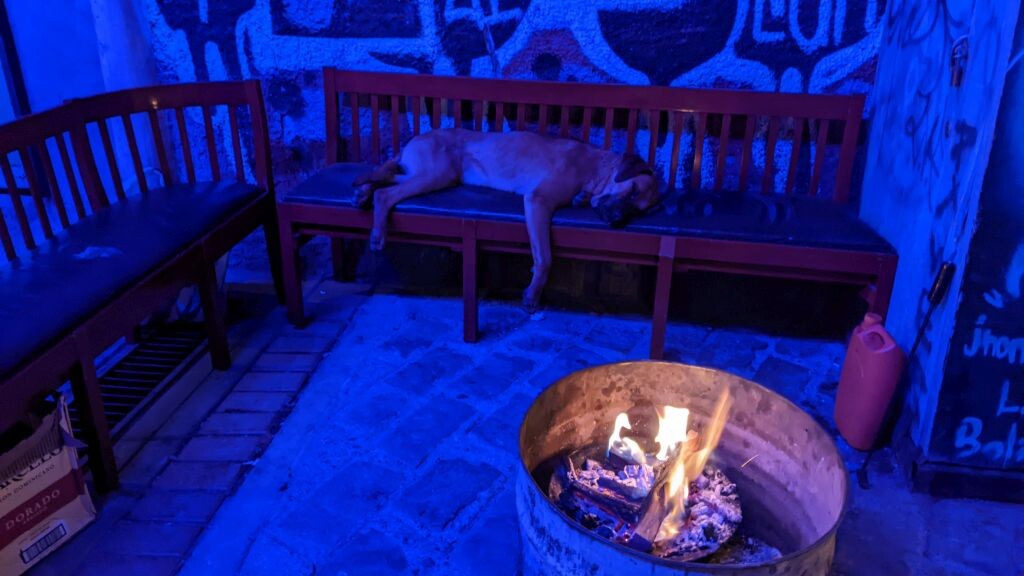
Street dog chilling outside the discotheque
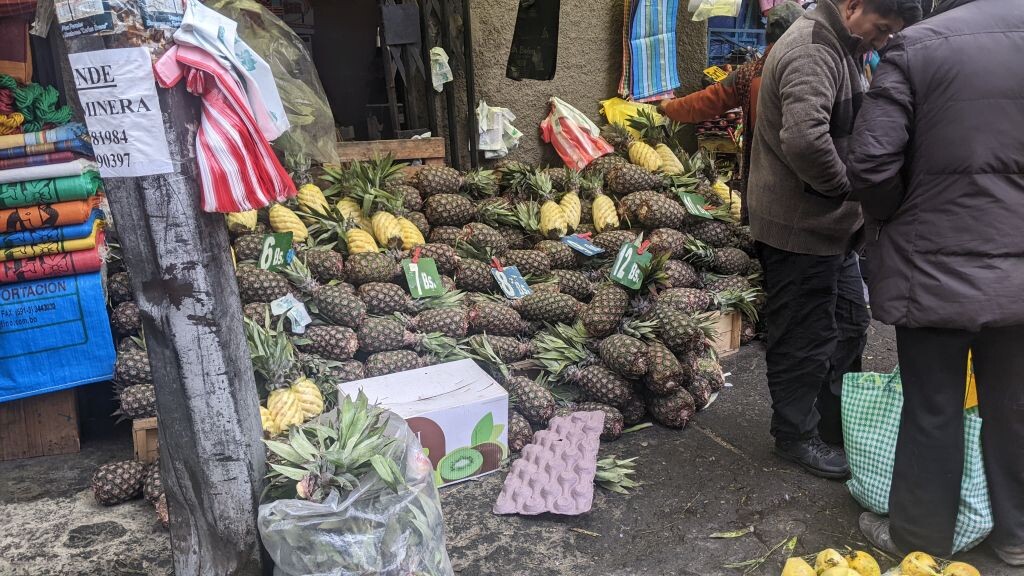
Pineapples galore

Up and over La Cumbre, ready for over 3,000 vertical meters of descending
With our small group we eventually crested La Cumbre and noticed the quick and sudden change in the air. We easily cruised about twenty kilometers to a small YPFB service station where we asked if we could camp nearby. “No” was the answer but a kind, older lady named Leonora noticed us from across the street and let us sleep in her backyard. After chatting and getting acquainted she shyly asked us for the necessary bus fare to La Paz, 15 Bolivianos. We gladly helped her pay for the bus. As we were getting setup in the backyard I noticed that it held more sheet metal than any one person could reasonably expect to need. But then it started raining. We quickly covered our bikes and listened to the chorus of rain drops while we cooked dinner under a large communal section. I had last seen rain in April near San Martin de Los Andes. I thought back to one of my first nights on the trip, over 200 days ago, when I slept in a small hut and listened as the wind battered my shelter; I thought about how much I enjoyed falling asleep that night and how much I’m still enjoying it tonight.
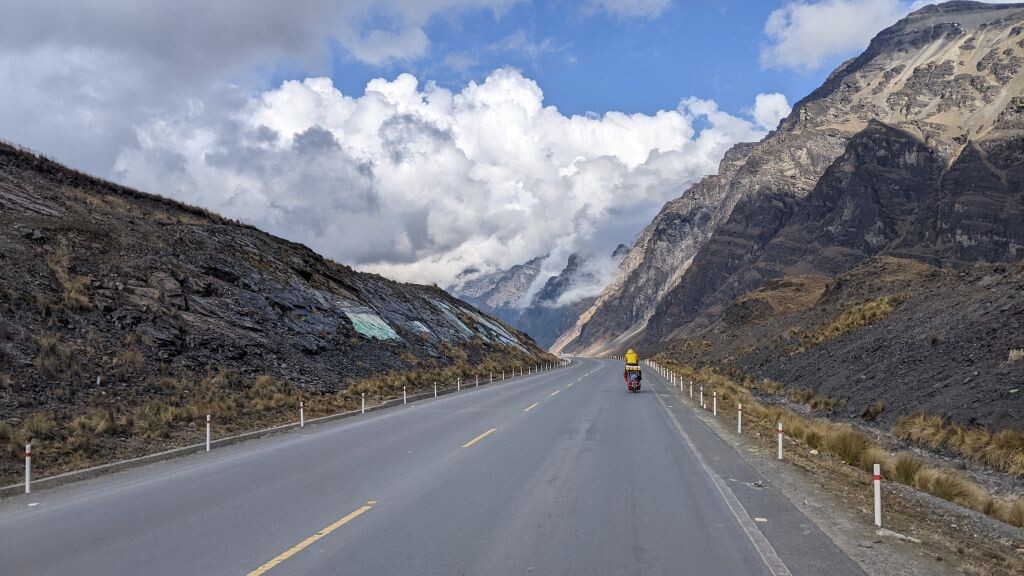
Diego and Mirlo leading the way
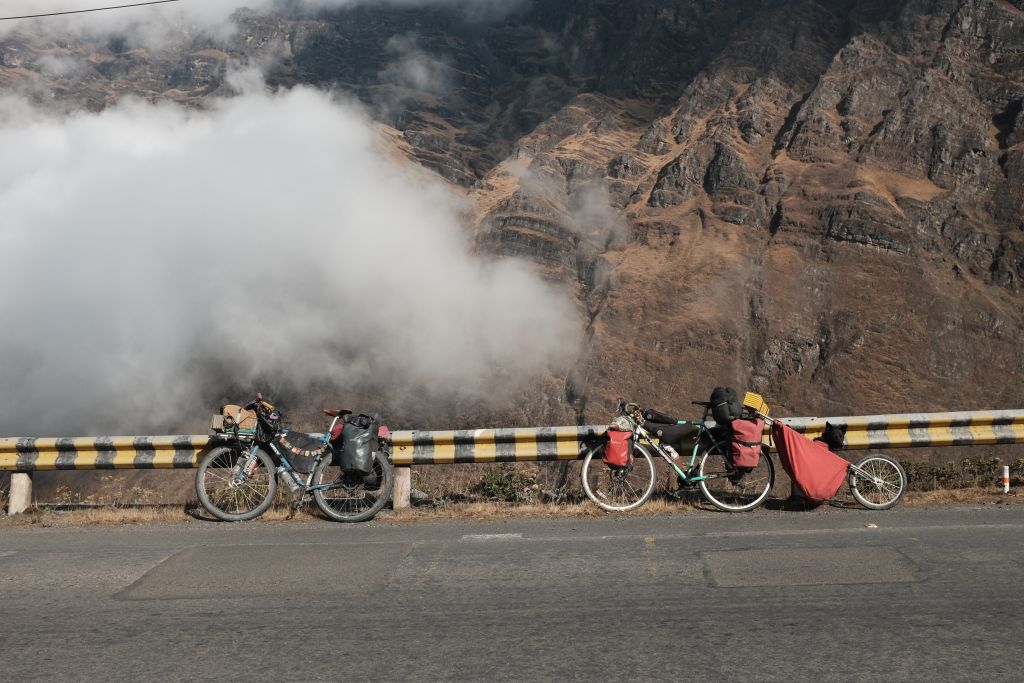
Trailer cruisin'
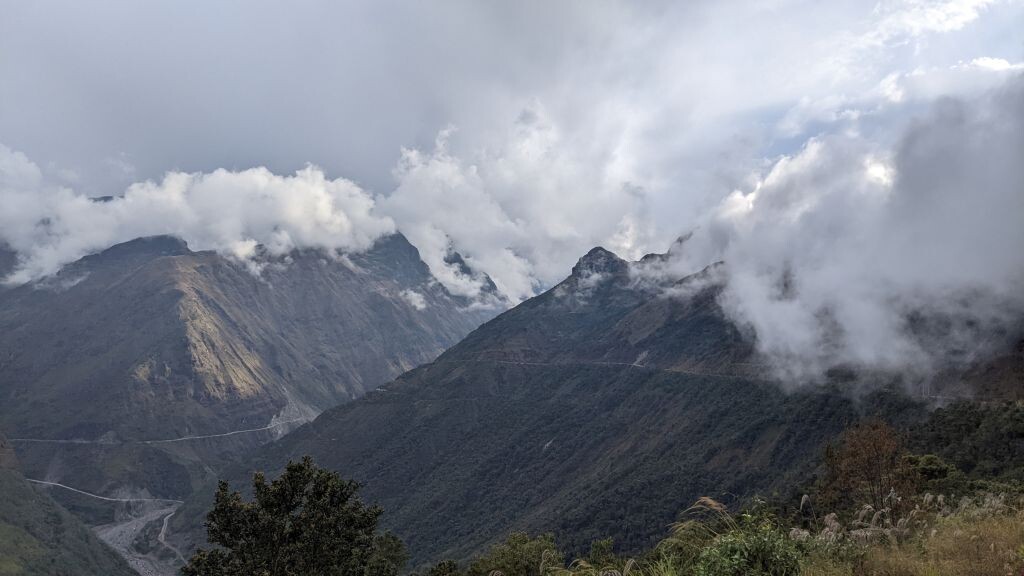
Amazing landscape on the way down to Los Yungas

The view across the valley in the morning
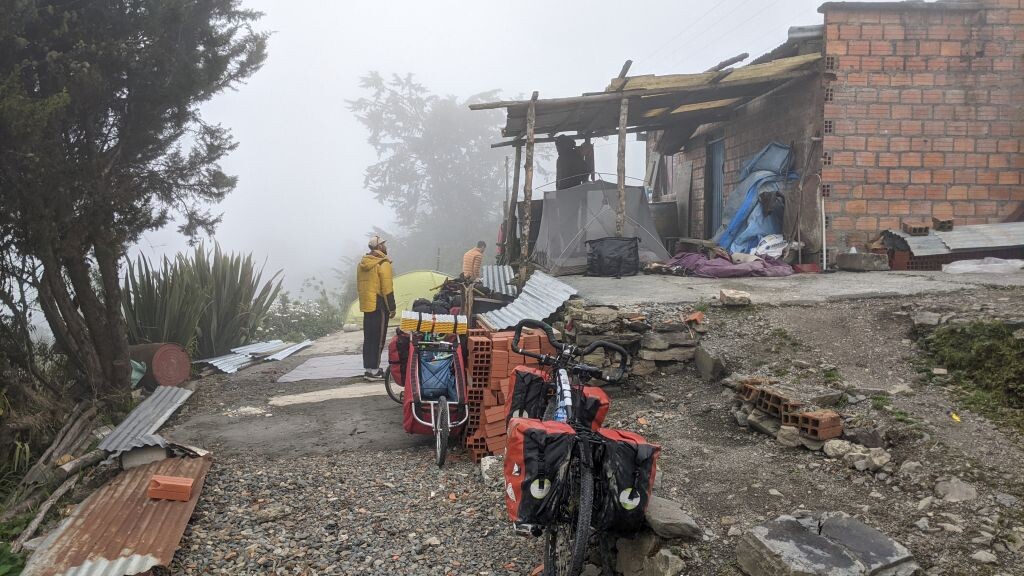
Leonora's backyard campsite
Leonora left early in the morning around 07:00, she chuckled upon seeing me lying on the floor in my sleeping bag, called us all “jóvenes” (young ones), told us to just lock up as we left, and off she went. The kindness and trust that many people have shared with me along the way have been some of the most lasting and impactful experiences of the trip. We had another slow, relaxed morning and then set off for more descending. The Carratera de la Muerte (“Death road”) was an absolutely beautiful stretch of road and with some common sense not all too dangerous, though people have died quite recently. I think cycling in city traffic is probably more dangerous. Our group made it down to Yolosa where we spent the night. The following day we rode the short distance up to Coroico for a few days of relaxing and enjoying the warm weather and nicely oxygenated air. We stayed at a great little campground with a pool, pizza oven, and spectacular view. What more could you need?
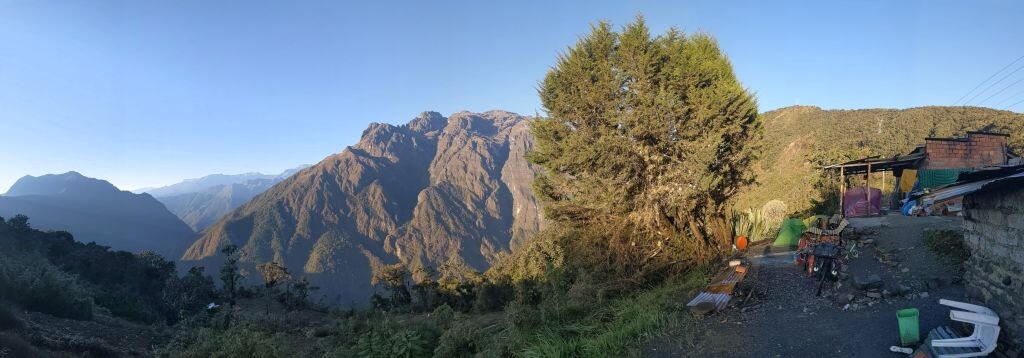
A room with a view

I couldn't get enough of the views

At the top of the Carratera de la Muerta

Oink oink!
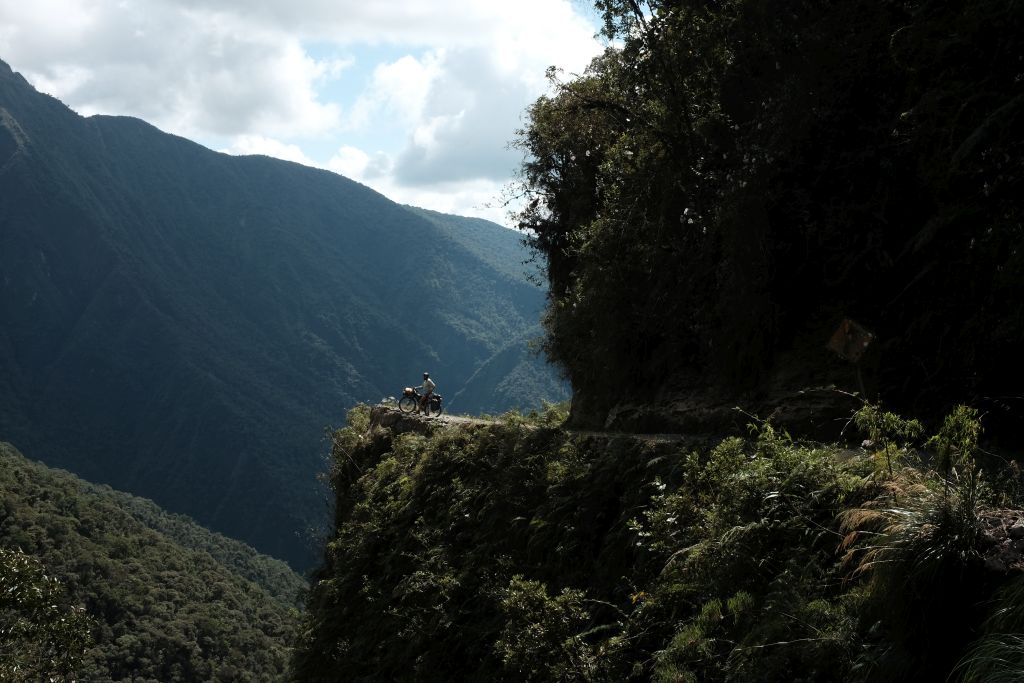
Obligatory death road shot

Still enjoying the ride
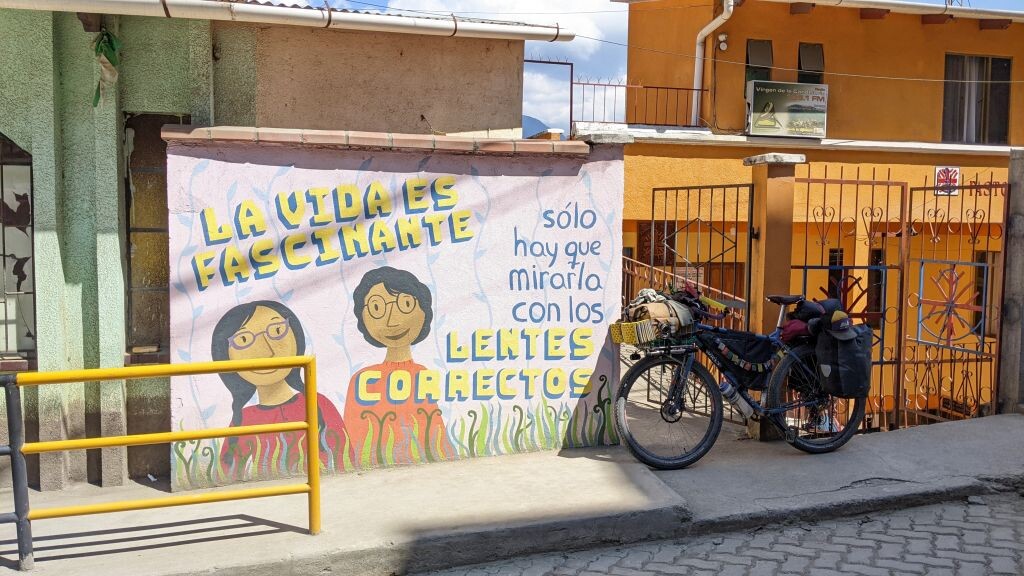
Es la verdad
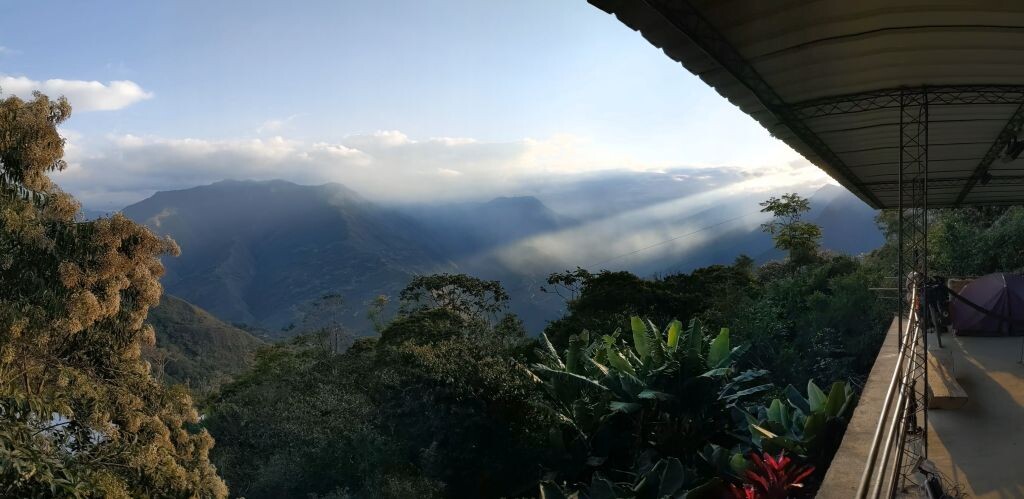
The changing light from our campsite in Coroico
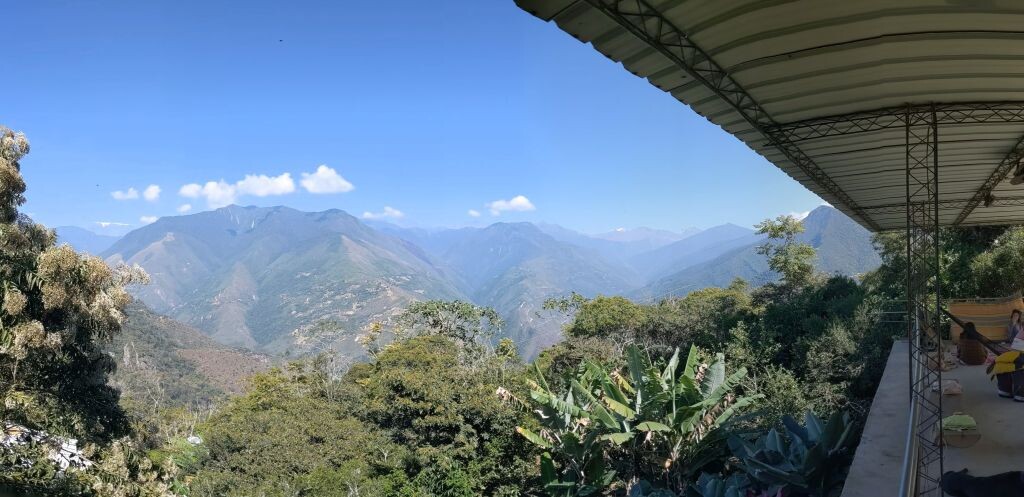
Still can't get enough
I was so happy that I didn’t skip this wonderful stretch of road and that I got to see some of the warmer, lower elevations in Bolivia. From the town of Coroico I eventually took a colectivo bus back up to La Paz. From the main square in town, small minivans wait until their filled with paying passengers and then they leave; fairly simple. I got there early enough and got a seat up front with the driver. With my bike securely loaded on the roof we set off. Leaving town, I enjoyed counting the amount of waves and honks the bus driver dished out to other people and reflected on how all you really need is a bit of community, something to pay the bills, and friends and family. Gorgeous mountain views and delicious fruit are nice bonuses. The drive back up the valley was equally scenic, though this time on the newly built highway. I grinned and stared out the window the whole way up, happy to be here.
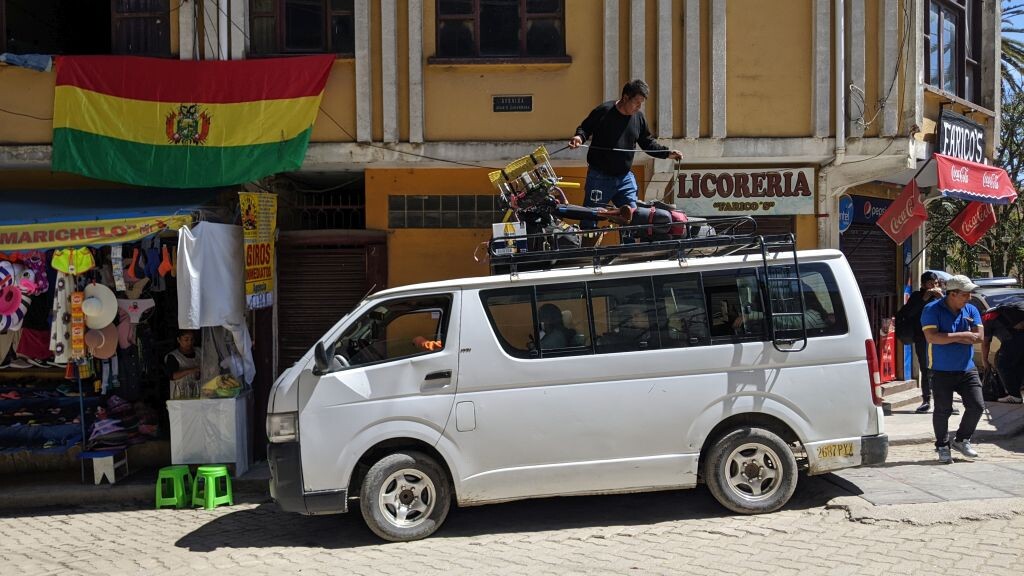
Loading my bike up for the bus ride back to La Paz
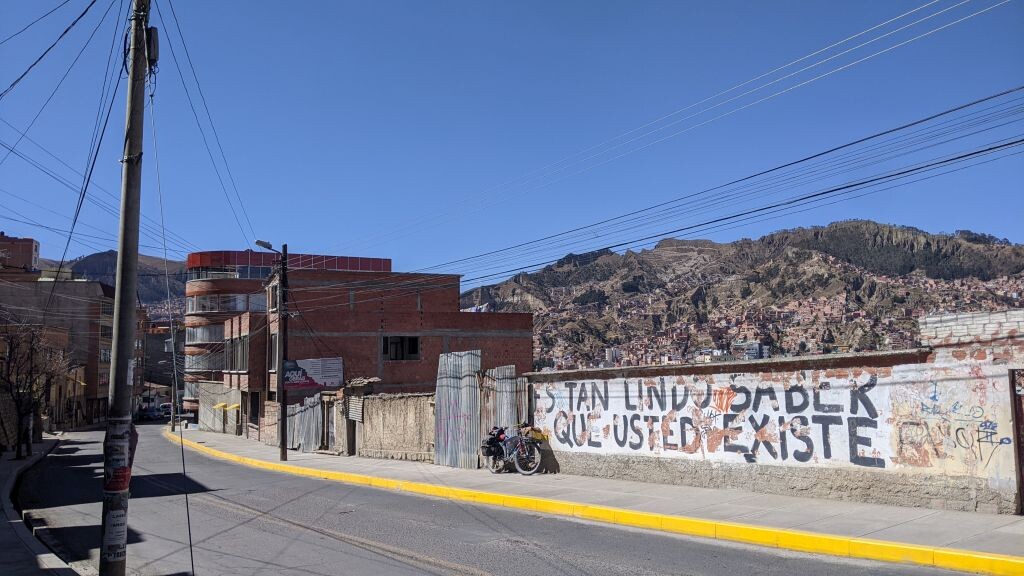
Back in La Paz, positive graffiti
I spent one more night in La Paz before finally leaving the city via the teleferico. It was a great base of operations for side trips but I was happy to be cycling again. On that first day back on the bike I made it to Tiahuanaco, an important pre-Columbian archeological site of the Aymara people. Not a lot is understood about the site but it’s a fascinating place to walk around and just ponder. Humans are fascinating creatures in that way, good at communicating abstract ideas and telling stories. Put some together long enough and they haul massive stones across vast distances to build structures aligned with the cosmos. Keep ’em together a bit longer still and they walk on the moon. I left Tiahuanaco and headed for the Peruvian border. I spent one night in Peru before crossing back into Bolivia and arriving at Copacabana on the shore of Lake Titicaca. From here it’ll be more high altitude cycling well into Peru.
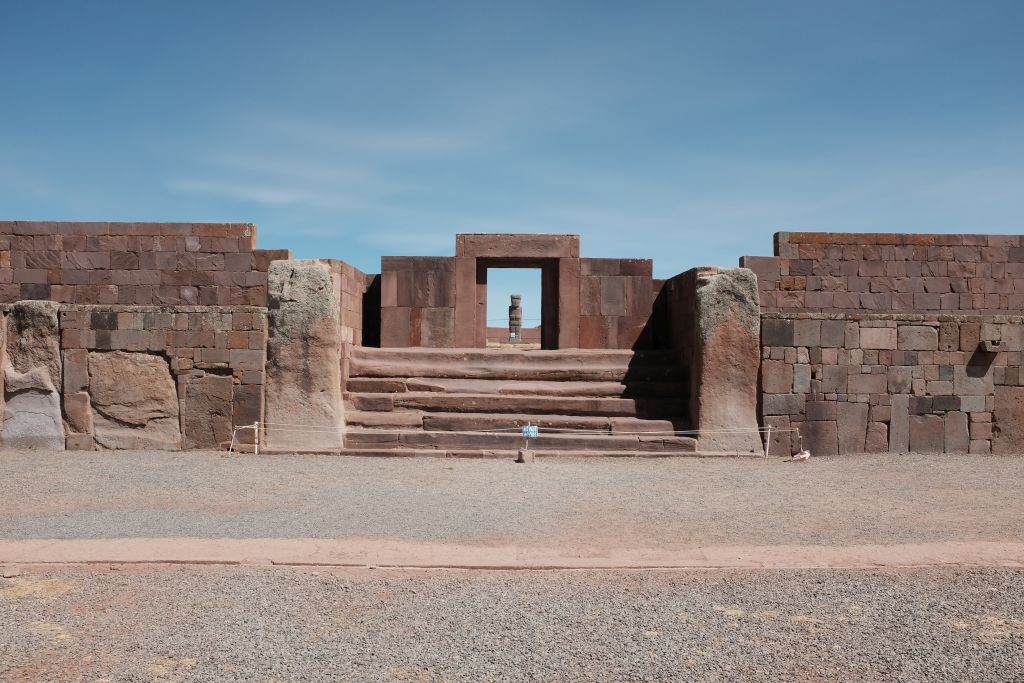
The Kalasasaya Temple at Tiahuanaco
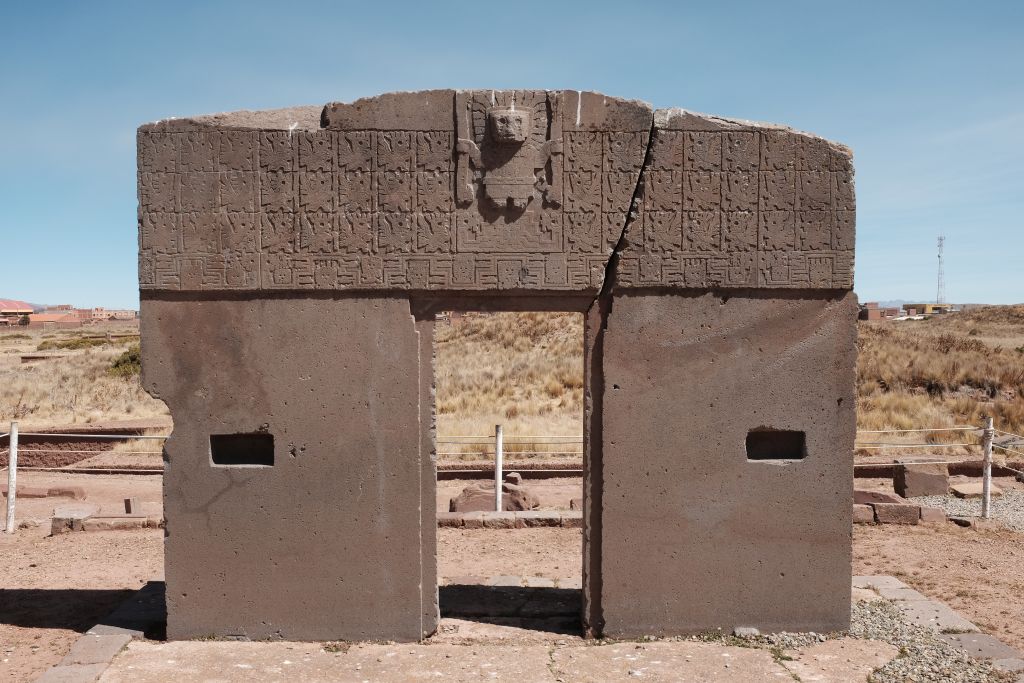
Puerta del Sol at Tiahuanaco